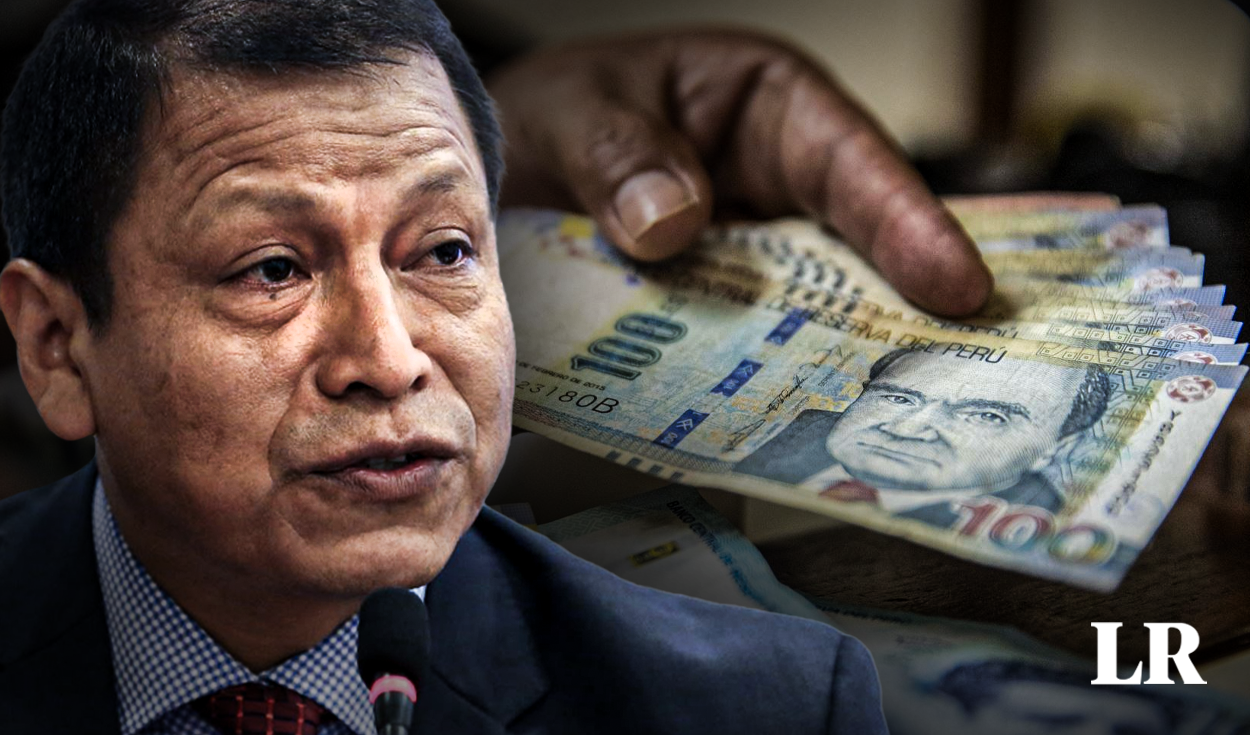
The Minister of Labor, Daniel Maurate Romero, once again spoke out about the increase in the minimum vital remuneration, which is currently set at S/1,025. According to him, in statements to TV Perú, this matter must be evaluated technically in the National Labor Council to make a decision on the matter.
Within the framework of International Workers’ Day, the head of the MTPE recognized that the minimum wage in our country is insufficient to guarantee a decent life for people. Let us remember that, nine months ago, President Dina Boluarte announced during her first message to the Nation that the increase in the RMV could materialize if there is a dialogue between the unions and the union centers; However, to date a technical formula for its review has not been reached.
Increase in the minimum wage 2024: what did the Minister of Labor say?
The last increase in the minimum vital remuneration became effective in May 2022, during the government of former president Pedro Castillo. In said period, the basic salary was raised from S/930 to S/1,025. Since then, the National Labor Council has not been able to land a consensus proposal for technical review.
Despite the announcement that Dina Boluarte made in July 2023 to raise the RMV, this issue does not seem to be a priority on the CNTPE agenda. However, the one who referred to the issue again, because inflation reached the target range of the Central Reserve Bank and there is a favorable scenario for the recovery of the economy, was the Minister of Labor, Daniel Maurate.
“We are now coming out of the recession. In January we have reached a growth of 1.3% of GDP and in February 2.8% positive. The Minister of Economy calculates that in the second half of this year we can see if the economy has strengthened, enough to begin discussing and talking about increasing the minimum wage. That is the moment we can evaluate”he specified in statements to TV Perú.
Likewise, he indicated that the minimum wage mainly impacts micro and small companies because large and medium-sized companies pay more than the minimum vital remuneration of S/1,025. Finally, Maurate confessed that the desire of the Executive Branch is for this measure to be carried out, but it will depend on the economic recovery and the development of private investment.
”In fact, I have already said it, the minimum wage is insufficient and we have to make an enormous effort so that this can be increased. However, that depends a lot on the economic issue, and last year the increase could not be made because we have been in a recession and a recession is a bad time to increase it,’ he stated.
How much is the increase proposed by the unions?
In previous statements to La República, the general secretary of the General Confederation of Workers of Peru, Gerónimo López, indicated that the increase in the minimum wage should be progressive until it reaches the amount of the basic family basket. “We believe that the minimum wage should be increased now to S/1,500 so that it progressively reaches the ceiling, which is S/2,200 or S/2,300”he pointed.
Along these lines, Julio César Bazán, president of the Unitary Central of Workers of Peru (CUT), explained that the proposal of his union is the establishment of a schedule of increases that, in a first tranche, reaches S/1,500, and the application of a proration so that in five years it reaches the value of the basic family basket.
Which government increased the minimum wage the most in the last 20 years?
From 2003 to the present, the minimum wage has increased by S/615. According to official data reviewed by this medium, the Ollanta Humala government was the one that increased this amount the most in the last 20 years, given that this income went from S/600 to S/850, which is equivalent to 41.67%.
In second place is the management of former president Alejandro Toledo, who increased the RMV twice, whose value went from S/410 to S/500, which means a variation of 21.95%. Then comes Alan García, who made the increase in the minimum wage official on up to four occasions, going from S/500 to S/600, which is equivalent to 20%.
Source: Larepublica
Alia is a professional author and journalist, working at 247 news agency. She writes on various topics from economy news to general interest pieces, providing readers with relevant and informative content. With years of experience, she brings a unique perspective and in-depth analysis to her work.












